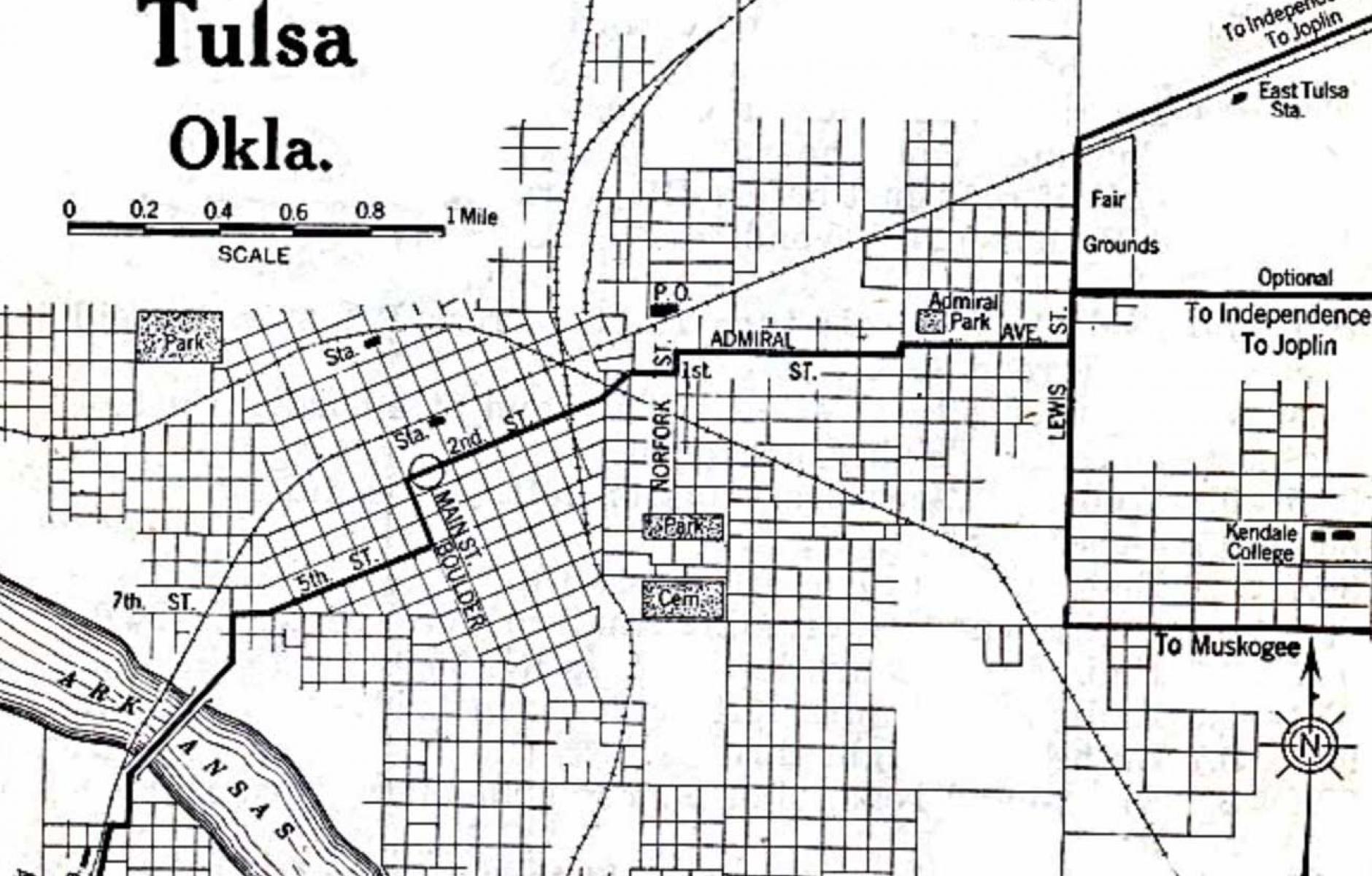
Micro-heroicism, Tulsa, and the DNA of CNU
Editor's note: CNU and Yard & Company partnered with the Global District, a nonprofit affiliate with Main Street America, to create a Tactical Urbanism project and plan for Tulsa’s Global District, a center of international culture and business. The project is part of CNU’s commitment to leave a lasting legacy in the host region of CNU 30, held in Oklahoma City in March. Congress attendee and urban designer Kevin Adams, and architect Don Glass, created an alternative plan for the Global District that aims for more fundamental changes in urban form. These ideas are offered in Public Square in the interest of intellectual dialog, without endorsement of CNU.
Raised in Tulsa, Oklahoma it was exciting to see CNU in my home state. Despite being in OKC, the Congress highlighted two Tulsa projects, the removal of the downtown severing inter-dispersal loop, and the Global District, an immigrant gateway in the sprawl of East Tulsa. But while the highway removal project is bold, the Global District project is much more fundamental. It has implications not just for Tulsa, but also a lot of North America and even the CNU.
Downtown Tulsa and its adjacent neighborhoods have a decent urban constitution. Those areas mostly need revival or mitigation, like the highway removal project. But most of Tulsa, like the Global District, is underlaid with a poorly conceived, mid-20th Century concept of urban design and doesn’t have revival options. It will need to be completely re-purposed. To make matters worse, Tulsa no longer has the luxury of the Ponzi Scheme of adding new short-term modernist fabric on its edges. Its hemmed in. To provide equity and opportunity for the long-term, cities like Tulsa must focus more critically on places like the Global District. In such areas we must take to heart historic planner Daniel Burnham’s decree to “make no little plans”—sort of. Let me explain.
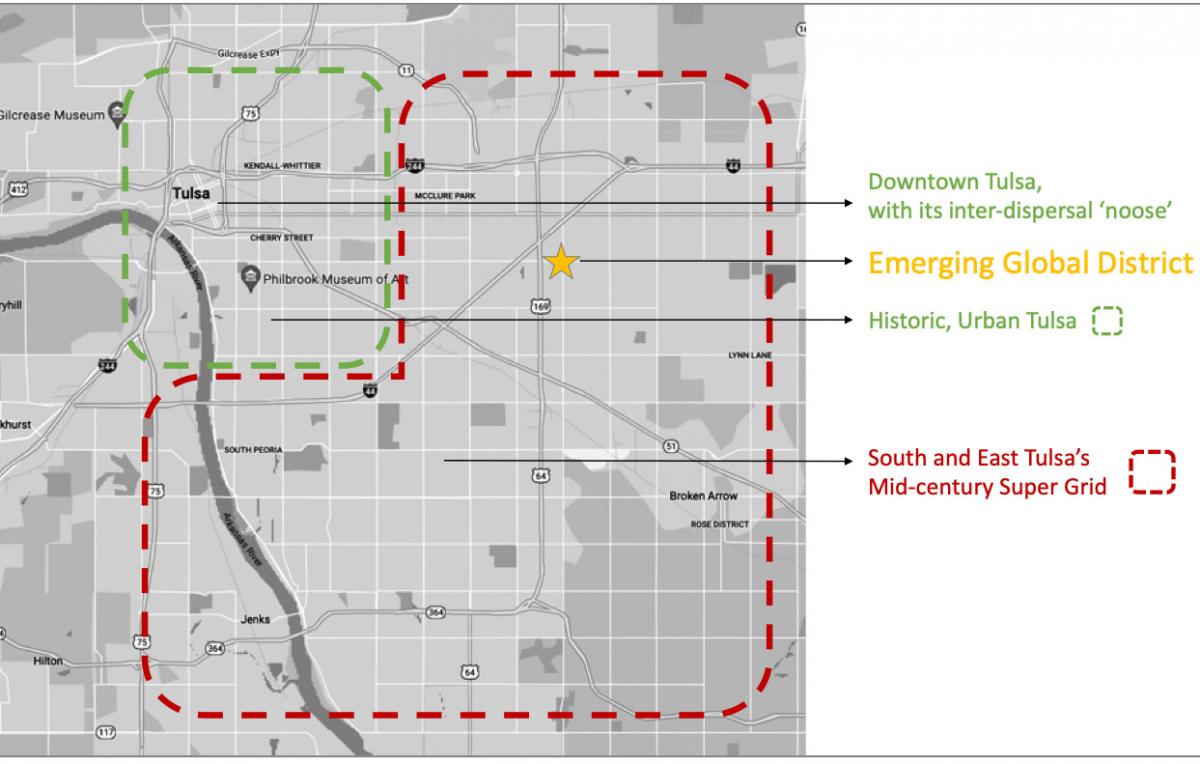
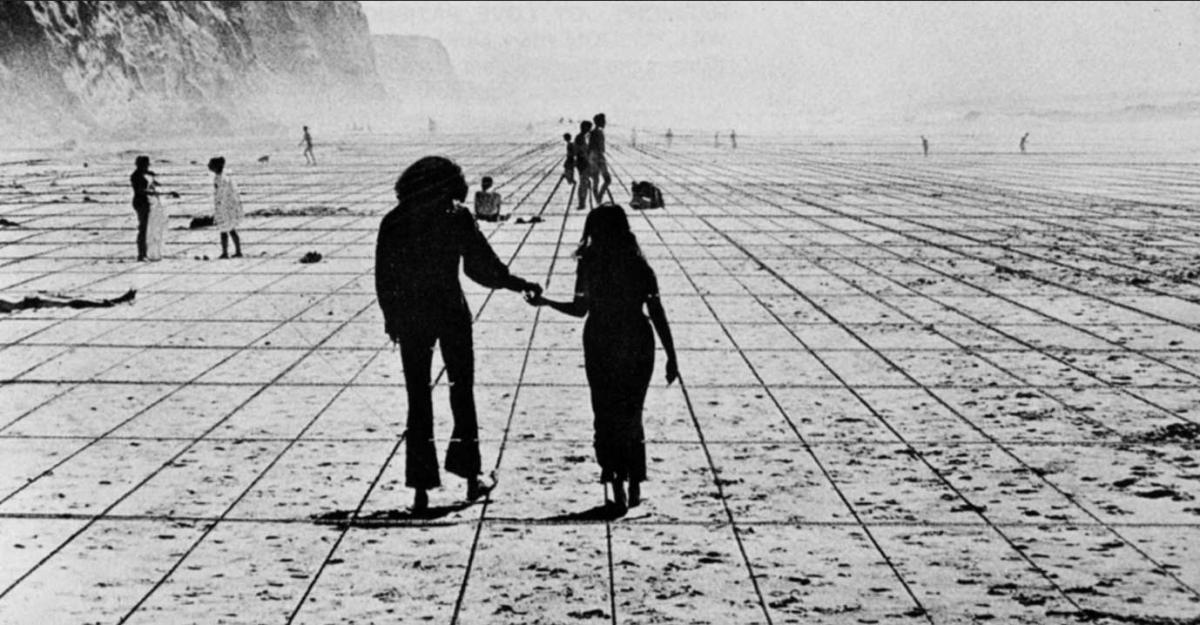
Urban Heroicism 1.0: Grand architectural interventions
First, let’s talk a bit about heroicism in urban design. When both professionals and the public think of heroic plans, they usually think in terms of large, expensive, silver bullets, the large-scale projects that take a lot of engineering and capital. The latest iteration of this thinking is the highway removal or cap, a topic to which CNU is very dedicated. Indeed, when I first saw that CNU was trying to link four immigrant revived commercial pods at Tulsa’s 21st and Garnett, my mind went to these kinds of interventions. “We cap highways, why not sink this intersection and heroically put a big international plaza in the middle?”
While it’s true that an area like this will always be hobbled if Stroads, designed as highways, cleave through the middle of it, heroically capping this location doesn’t pencil out and has all kinds of other problems, such as its proximity to Tulsa’s infamous Mingo Valley flood plain. So yes, that knee jerk heroicism was off-base, at least for this location. But frankly, even turning the current Stroads into boulevards, another popular mitigation across the country, doesn’t quite cut it. These streets, though massive are just one element in urbanism’s template, and that’s the rub. You can’t just focus on one element at a time, the boulevards, a plaza, etc., in this kind of 20thcentury urban order. What this site--and countless sites just like it across Tulsa and America--truly calls for is the complete CNU urban design package, somehow inserted into its mid-20th century design language. It needs a collection of right sized parcels, right sized blocks, right sized streets and meaningful civic spaces and monuments, in addition to the new imigrant businesses that have emerged in its mid-century structures.
Urban Heroicism 2.0: Micro urbanism
In its early days CNU arguably suffered a bit from an ‘if you build it, they shall come” mentality. But now it may suffer from a new malady as it confronts places like East Tulsa’s Global District, an “its too hard to reconstitute, so why bother” defeatism. I saw that on display at CNU 30’s discussion of this area. Tulsa’s comprehensive plan has already declared this portion of the city’s vast super grid a ‘town center.’ But simply designating an economically active area a center does not make it an authentic and sustainable town. To have a true, sustainable, and authentic town center you must have an ‘urban’ physical order, what some theorists call the physical constitution of the place, hitched up to the economic activity on top of it. A few tactical moves, especially in a ‘town center’ constituted like the Global District, may not do much for such a place. Something more heroic is called for here. And the best Burnham level act at this location would be to make smaller, but complete plans, that can be inserted strategically into the decaying 20th Century environment.
What happens when all the buildings nestled in the unsustainable pattern reach their final days? Will they be rebuilt on this pattern? Maybe. Or more than likely the energy could simply move to an intersection further down the highway and not as close to building death as these structures. Indeed, the energy of the Tulsa Global District now may not be an indicator of renewal, but rather an indicator of a pre-death energy state, like the terminally ill sometimes exhibit just before they meet their makers. What the Global District requires most is a sustainable and authentic constitutional order to support its cultural and economic heartbeat, so it can thrive many more years to come.
A fundamentally flawed design
Let’s break down the site’s urban sustainability problems the Global District, while reminding ourselves about the fundamental layers of good urbanism.
- Buildings: The most visible layer of any site are the structures. In this case they are the mid-20th century structures the immigrants have reanimated. But they are close to their end; they have no coherent configuration; and there is nothing about the rest of the area’s fabric that suggests they will be loved and rebuilt.
- Lots, blocks, and streets: The next layer is the collection of lots, blocks, and streets. This is a more important layer than the buildings. It’s difficult to fix, but if these lines aren’t redrawn, the area will never be truly urban and sustainable. Lots on this site are mostly too large and not forming any coherent pattern. Blocks are therefore almost non-existent. Next, streets are primarily the area’s two stroads, 21st and Garnett, which form corners on the Tulsa super grid. And the side streets that do exist, are still too large and just like the parcels are not creating any coherent pattern.
- Civic Spaces and Monuments: But the most important elements, which are utterly non-existent here, are the civic spaces and monuments, which embody the values and aspirations of the local culture. This is the urban hardware that makes the community not just of its current members but something more transcendent and spanning generations, and therefore more sustainable, resilient, and authentic.
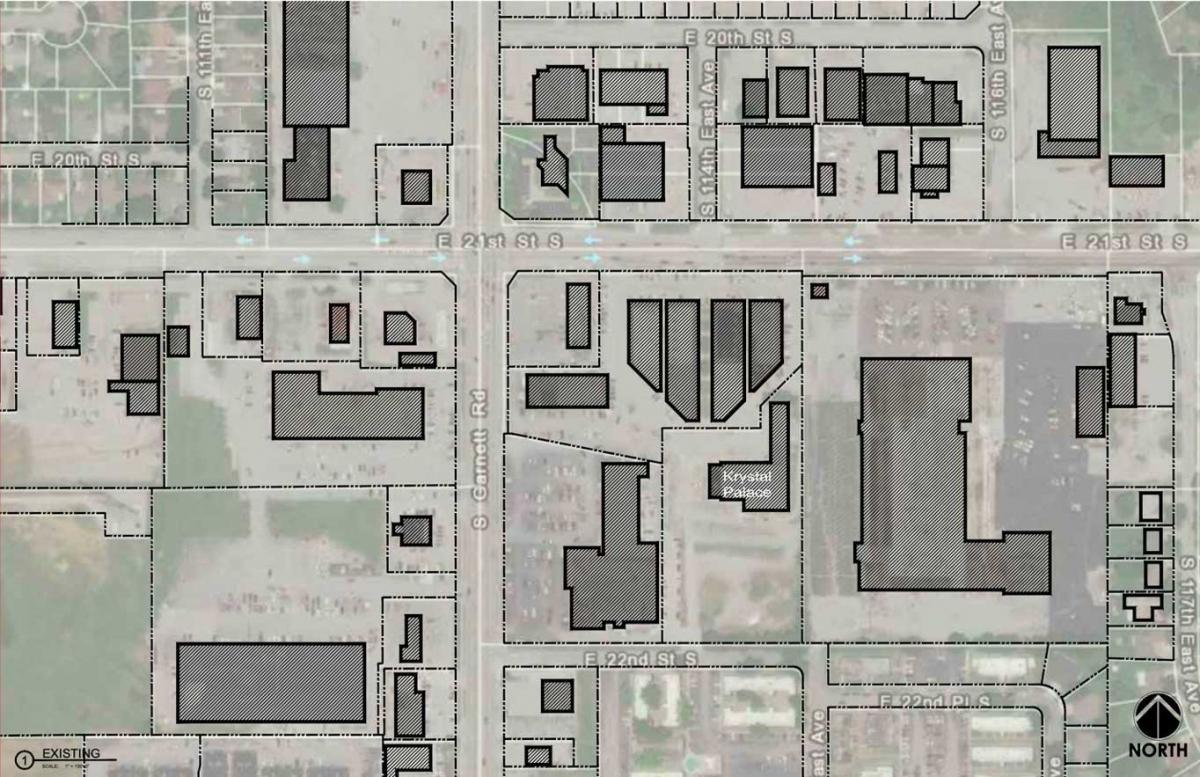
So what do we do?
Unfortunately, the building of a holistic, physical heart is no longer intuitive. The building culture has forgotten this language. And even for those who understand traditional urban design, like the CNU, the solution in places like the Global District feels overwhelming.
The tactical plaza project of the District’s promoter’s is on the right path, but it also needs a plan that physically anchors their concepts, while connecting it to a holistic configuration of streets, lots, blocks, and buildings. No matter how daunting, we must add all the key elements of urbanism together, as a planned set, to truly bring about a lasting change here. It’s akin to Jeff Speck’s four-point plan for walkability, also presented at CNU 30, Speck points out that without all four of his walkability criteria, an area isn’t truly walkable. Well, without all these urban elements defined together as a coherent whole, Tulsa’s Global District isn’t really a viable, long-term center.
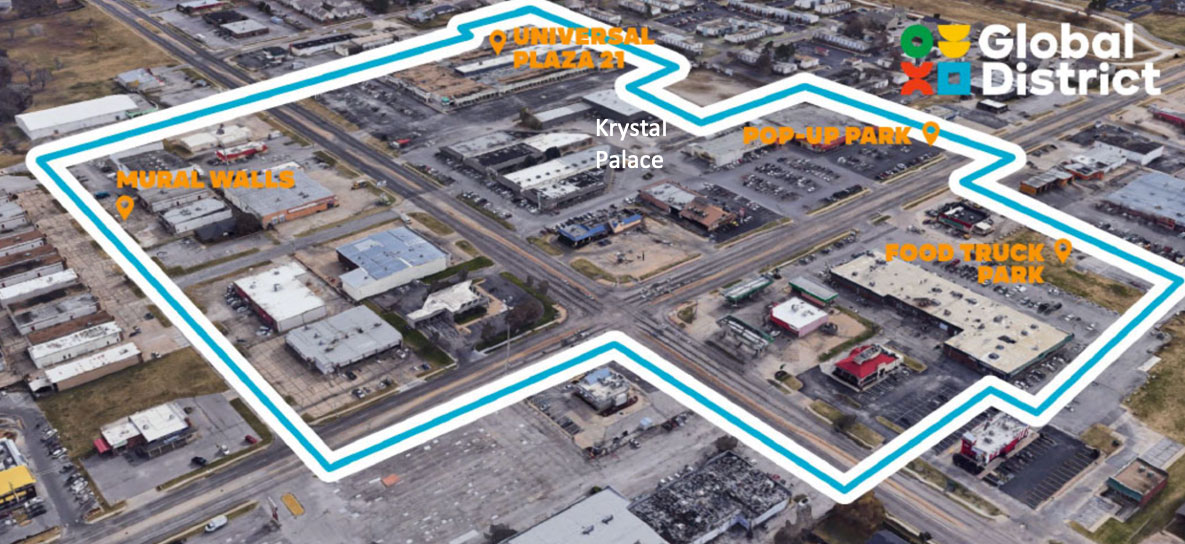
What this place desperately needs is a heroic addition of a holistic but smaller scaled urbanism, not just the isolated ingredients of urbanism, like a boulevard redo or a pedestrian loop, but the entire urban form in the micro. Then, from that valuable ensemble, the rest of the fabric can reorient. And if the rest of that fabric isn’t perfect, you can be confident that there is some “there, there,” holding it together and buttressing it from decline. Meanwhile this more micro but holistic urban approach to redevelopment is also more likely to work with and protect the current cultural and economic vibrancy.
Micro-urban interventions
It’s important to show and not just tell. So true to CNU culture, architect Don Glass, who grew up regionally and worked professionally in Tulsa before moving to his current practice in Vancouver, Canada, joined me in the effort to repurpose the Global District. Our back of the envelope plan, hatched between CNU sessions, is the concept of “islands of coherence” These small areas can be inserted on key or available parcels over time. And if selected carefully, these repurposed parcels can be centers around which current economic vibrancy begins to reorient as buildings get re “placed.” The district’s collection of global businesses is its current catalyst, but the new civic spaces bring cohesion and a future.
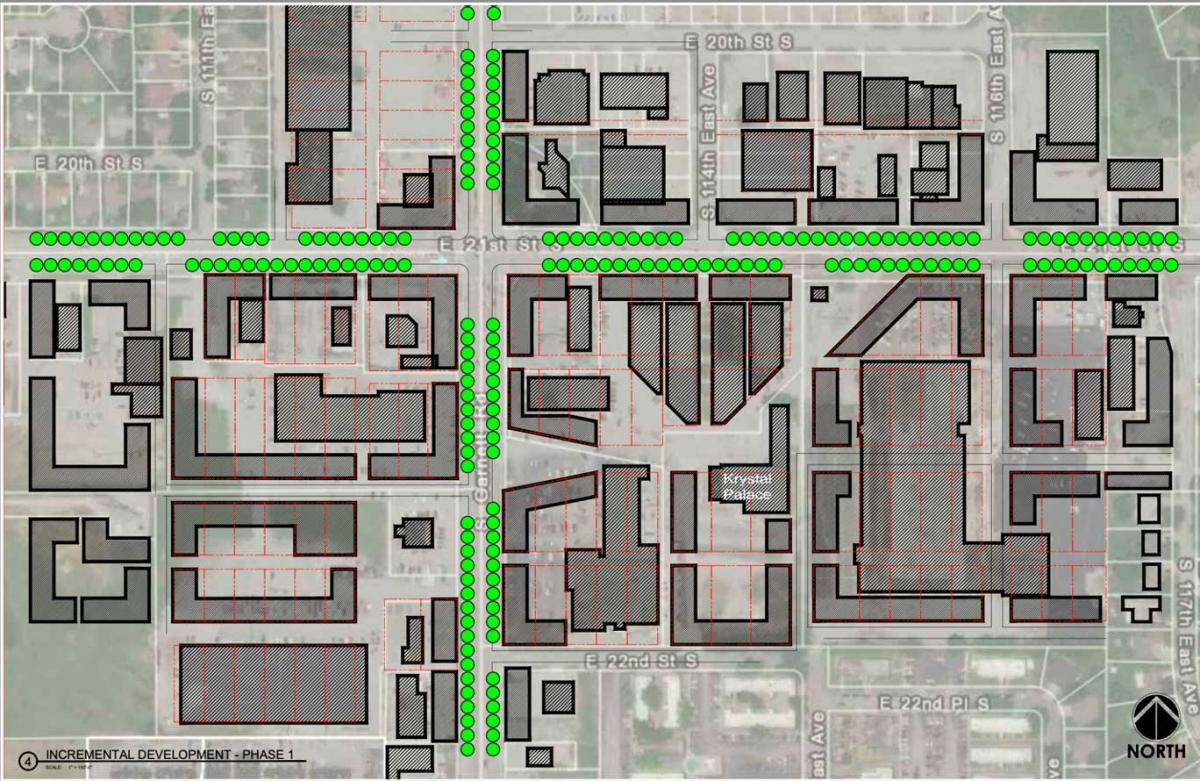
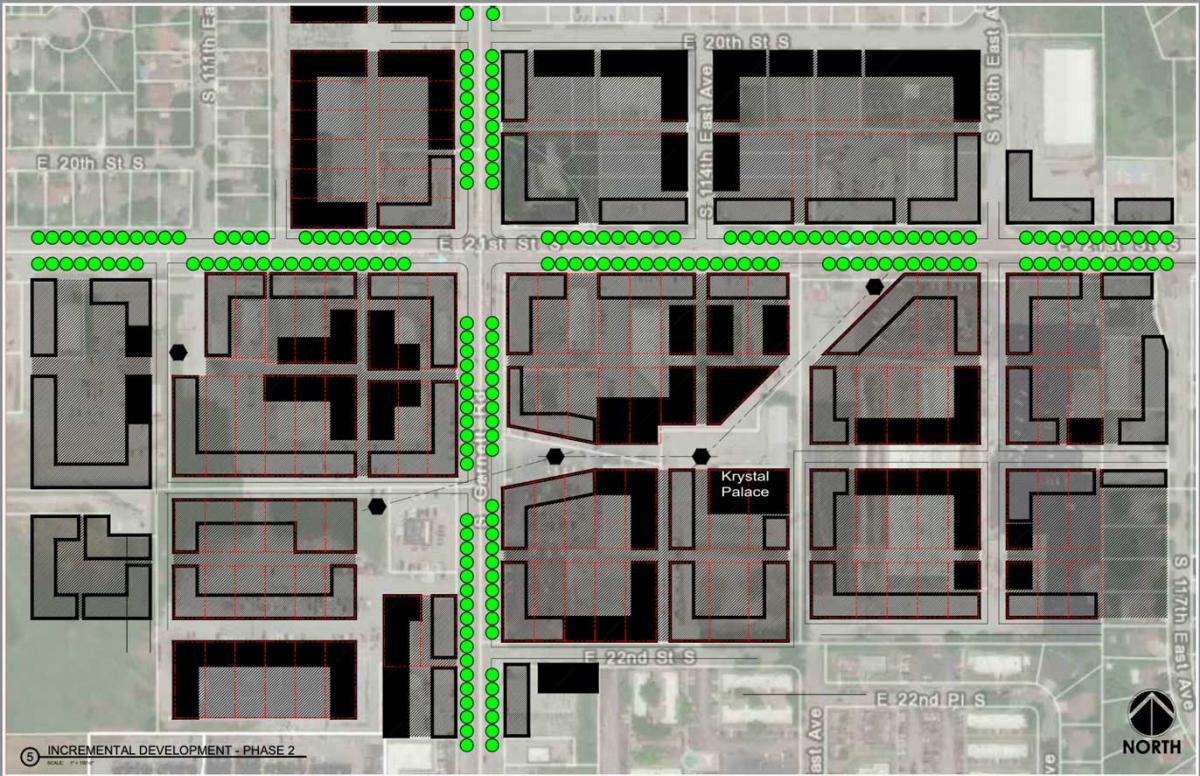
As for key urban elements of the new district, the area’s two Stroads are still converted into boulevards, but the connecting streets and alleys forming the inner block ‘islands of coherence’ are more important as they constitute the new block boundaries and the entire district’s overall pattern reset mechanism. These new blocks initially avoid building footprints and have been drawn using parcel lines where possible.
While some structures may be redeveloped on their current footprints, others could shift into the more rational system of the proposed plan. The result is a little quirky, but this adds to the character derived from the place’s morphological history.
Although not shown here, parcels can also be reimagined within these new ‘islands of coherence.’ Since affordable housing is scarce in this dated retail mono-culture, the plan could easily include small housing lots lining the new civic spaces to mix land uses at a finer grain. But most of all the plan adds locations for community “monuments.” These are focal points for key structures, like the District’s Krystal Palace event hall, which could be repurposed as a true community heart.
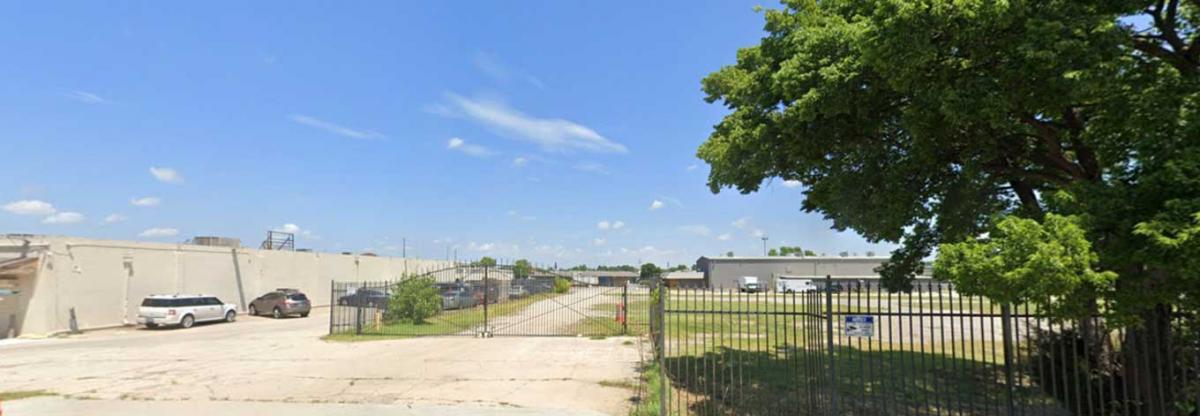
How do we get there?
This plan is not the template for a standard development approach and that’s OK. We don’t need big developers bringing their cookie cutter concepts, such as ‘Texas Donuts,’ at destructive scales. Instead, to implement this heroic but more micro urban plan will take small scale developers with CNU sensibilities, hooked up to local capital, as well as local funding entities like Tulsa’s George Kaiser Foundation. Focusing on one large parcel or collection of adjacent parcels at a time, ‘islands of coherence’ could truly transform this district.
And although this heroic change seems small compared to other Tulsa initiatives like the freeway removal or even the recently built award-winning Tulsa Gathering Place, Tulsa should care more about this project than those grand Burnham worthy plans. Unlike those efforts, this plan has implications for the plethora of declining nodes and unhealthy intersections spanning the massive, decaying Tulsa super grid. Done right, this project could become a beacon of what’s possible in a city scape that is mostly constituted by anti-spaces—spaces that are anti-community, anti-health, have bleak financial futures and where the working classes, immigrants, and minorities of Tulsa find themselves increasingly cast away.
Why and how should CNU Care?
I left CNU 30 in Oklahoma both invigorated and disheartened. There wasn’t enough of CNU’s heart, a voice for good but complete urbanism. There are other organizations for architecture, community planning, transportation etc., but only CNU really covers the basics of urban design. If CNU is serious about equity in the long-term, we should have a dedicated campaign for a ‘micro-heroic,’ urban design remapping of mid-century America, the places where most immigrants, workers and minorities now find themselves struggling to build sustainable communities.
CNU also needs a stronger dose of participatory design. We are supposed to be the experts on urbanism, but with a hand in so many built environment disciplines, the basics of good urbanism can get crowded out. Highway caps and tactical plazas are all good things, but when untethered to good urbanism, they are far less powerful.
I firmly believe that the entire Congress, regardless or our primary disciplines, should practice our common interest in urban design more collectively, and by so doing, recharge the organization’s primary mission. Imagine a CNU where the legacy project is not just tactical, nor one firm’s response to a host location, but an urban design problem posed to the whole Congress.
Instead of submitting your vaccine card, you submit your back of the envelope urban design response to the context at hand. Later a special session or hall could highlight submissions. Naturally, the skilled designers will likely have the best solutions, but everybody having gone through the process will have exercised their urbanism muscles, and most importantly, the building culture will grow stronger as it seeds cities across the country with good urbanism, one host location at a time.
This kind of yearly practice would be especially useful for places like Tulsa’s Global District when they get chosen. To overcome its unsustainable 20th century patterns will take heroic efforts. The micro yet heroic plan recommended here is just the start of what’s needed for a healthy and whole Tulsa. Once such plans are drawn, it will then take heroes to harness the local capital; heroes to get the form-based overlays and heroes to do all the community building and networking to make it real.
But by being truer to its urban design DNA, CNU gives those efforts the best it has to offer and helps to create a more long-lasting difference not just for Tulsa but for immigrant and minority communities across North America.




